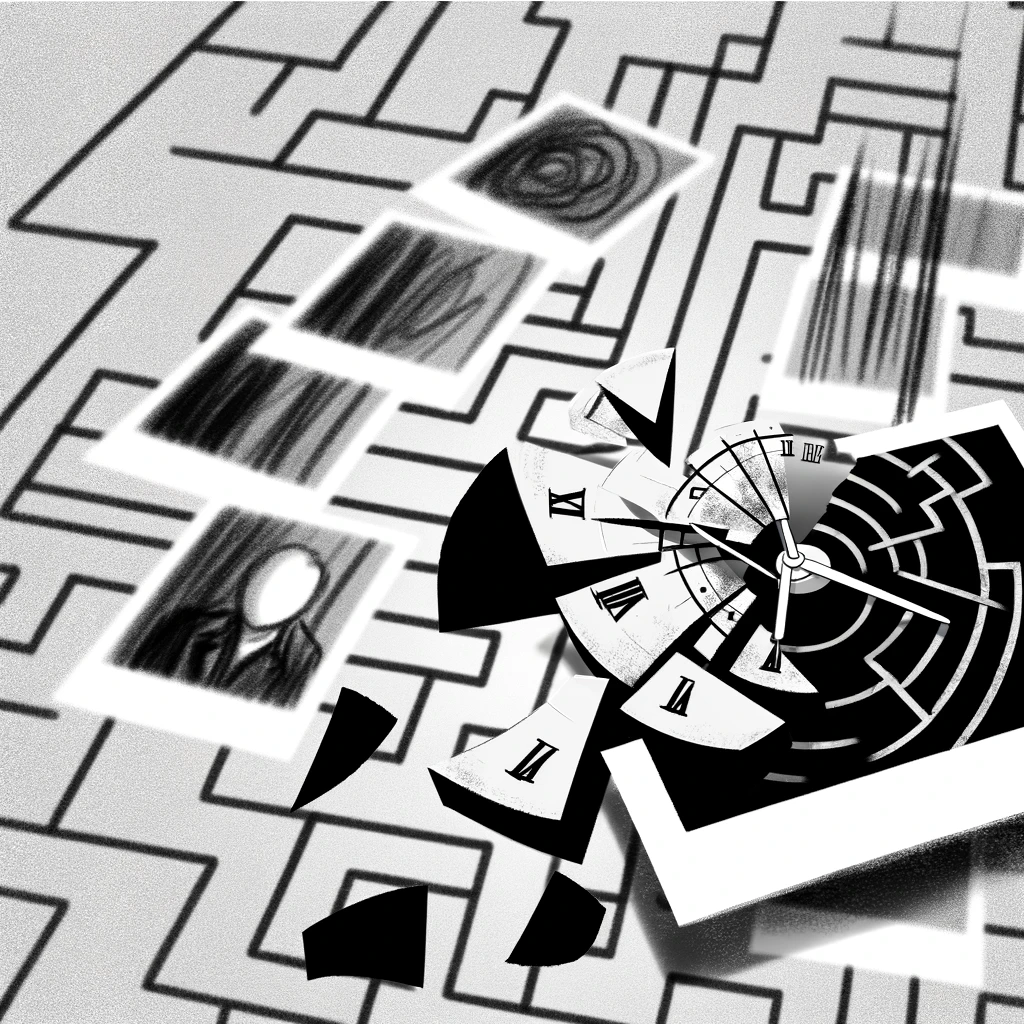The Mind-Bending World of Christopher Nolan's 'Memento'
Dive into the complexities of Christopher Nolan's 'Memento,' a film that challenges traditional storytelling with its unique narrative structure. Explore the themes of memory, identity, and truth in this psychological thriller.

Christopher Nolan’s “Memento” is a film that defies traditional storytelling, leaving its audience captivated and bewildered. Released in 2000, this neo-noir psychological thriller has become a hallmark of innovative filmmaking, employing a unique narrative structure that challenges the viewer’s perception of time and memory.
The Heart of “Memento”: Leonard Shelby’s Quest for Justice
At the heart of “Memento” is the character of Leonard Shelby, portrayed with compelling intensity by Guy Pearce. Leonard is a man trapped in a perpetual present, unable to form new memories due to anterograde amnesia. This condition, a result of a traumatic incident that also led to his wife’s murder, leaves Leonard in a constant state of confusion and vulnerability. Despite these challenges, he is driven by an unwavering determination to seek justice for his wife’s death.
Leonard’s Unique System: Navigating a Fragmented World
To navigate his fragmented world, Leonard devises a unique system to retain information and maintain a sense of continuity in his life. He uses Polaroid photographs to capture people, places, and objects crucial to his investigation. Each photo is annotated with essential details, serving as a visual diary that Leonard can refer to as he tries to piece together the mystery.
In addition to the photographs, Leonard’s body serves as a canvas for crucial information. He tattoos important facts and clues directly onto his skin, creating a permanent record that cannot be lost or forgotten. These tattoos include vital details about his wife’s murder, key suspects, and instructions for himself. This unconventional memory-keeping method highlights Leonard’s desperation and the extreme measures he must take to pursue his quest for truth.
Another critical aspect of Leonard’s system is the use of notes. He carries a collection of handwritten notes that provide additional context and guidance. These notes often scribbled on scraps of paper, serve as reminders and directives, helping Leonard navigate the complexities of his investigation.
The Dual Narrative Structure: A Reflection of Leonard’s Psychological State
The dual narrative structure of “Memento” is not just a stylistic choice but a reflection of the protagonist’s psychological state. The film’s timeline split between color and black-and-white scenes, serves as a visual metaphor for Leonard’s fractured memory. The black-and-white scenes, presented in a straightforward, chronological order, symbolize the clarity of Leonard’s long-term memories before his injury. These segments give the audience a factual baseline, grounding the story in Leonard’s pre-accident reality.
In contrast, the colored scenes move in reverse chronological order and represent Leonard’s post-accident, short-term memories. This backward progression mirrors how Leonard experiences time, with each new moment immediately becoming a distant memory. As the film unfolds, these colored scenes peel back the layers of Leonard’s quest, revealing the complexities and contradictions of his mission. The audience, like Leonard, is constantly challenged to piece together the puzzle, questioning the characters’ reliability and motivations.
Exploring Themes of Memory, Identity, and Truth
“Memento” is not just a story about a man seeking justice; it is an exploration of the human psyche and the fallibility of memory. Nolan masterfully uses the film’s structure to raise questions about the nature of truth and the reliability of our perceptions. As Leonard’s memories are revealed to be increasingly unreliable, the audience is left to wonder: can we ever truly trust our recollections?
The film’s ending, which converges the two timelines, leaves viewers with more questions than answers. The revelation that Leonard may have manipulated his memory system to give his life purpose challenges the very foundation of his quest. It raises profound questions about the nature of identity and the lengths we will go to find meaning in our lives.
Conclusion: A Cinematic Masterpiece That Transcends Traditional Storytelling
In conclusion, “Memento” is a cinematic masterpiece transcending traditional storytelling. The film invites viewers to question their perceptions of reality and memory through its innovative narrative structure and exploration of complex themes. It is a testament to Nolan’s ingenuity as a filmmaker and remains a thought-provoking piece that resonates with audiences more than two decades after its release.
“Top Movie Picks of 2023”, my list on @letterboxd: https://t.co/taXem1tXly
— REG Blog (@reg_blog) March 6, 2024